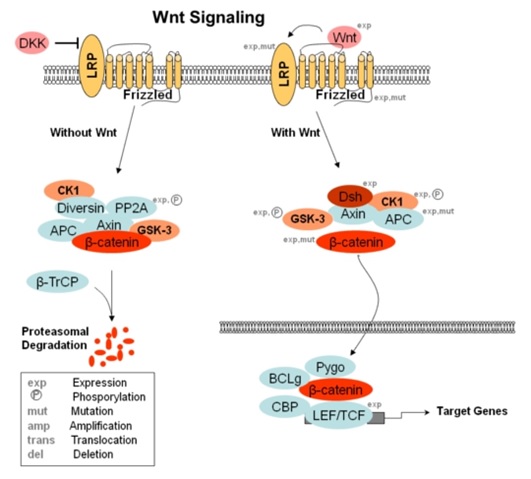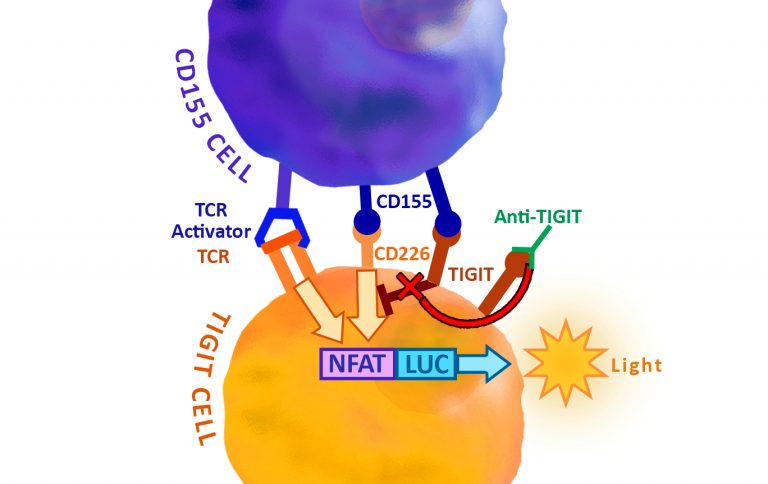The Wnt cell signalling pathway is a high-potential therapeutical target in cancer research. It’s deeply linked to cellular fate through modulating cell proliferation, mobility, interaction, and polarity. Wnt is not only a key player in the embryonic development but also in the homeostasis, and remodeling of adult tissues (heart, bone, neural tube, angiogenesis…) via somatic stem cell modulations and stem cell self-renewal. Abnormal Wnt signaling events are seen in various types of human carcinomas and in a variety of other cancer types.
Like other important cell signaling pathways (ex. PI3K/Akt/mTOR, Notch…), the Wnt pathway involves numerous partners and intracellular cascades of events. The “Wnt” acronym was first described in the 1990’s after the identification of 2 homologous genes found in Drosophilia (Wingless wg) and in Mouse (Int-1) a few years before.
Wnt/ß-Catenin pathway – a brief overview
Get started down the Wnt/ß-Catenin pathway with this overview, which takes a look at:
- The non canonical ß-Catenin independant planar cell polarity pathway (Wnt/PCP or Wnt/JNK)
- The non canonical ß-Catenin independant Wnt/calcium pathway (Wnt/Ca2+)
- The canonical ß-Catenin dependant pathway (Wnt/ß-Catenin)
 Interested in going further in deciphering the Wnt pathway?
Interested in going further in deciphering the Wnt pathway?
What are the new promising therapeutical candidates? Which new or existing research tools are popular to further analyse this pathway?
This guide is aimed at bringing a global overview of this fascinating Wnt / ß-Catenin signalling pathway but also introducing 4 innovative ways to decipher Wnt/ß-catenin pathway in research and drug discovery programs.

 Download your copy of:
Download your copy of:

